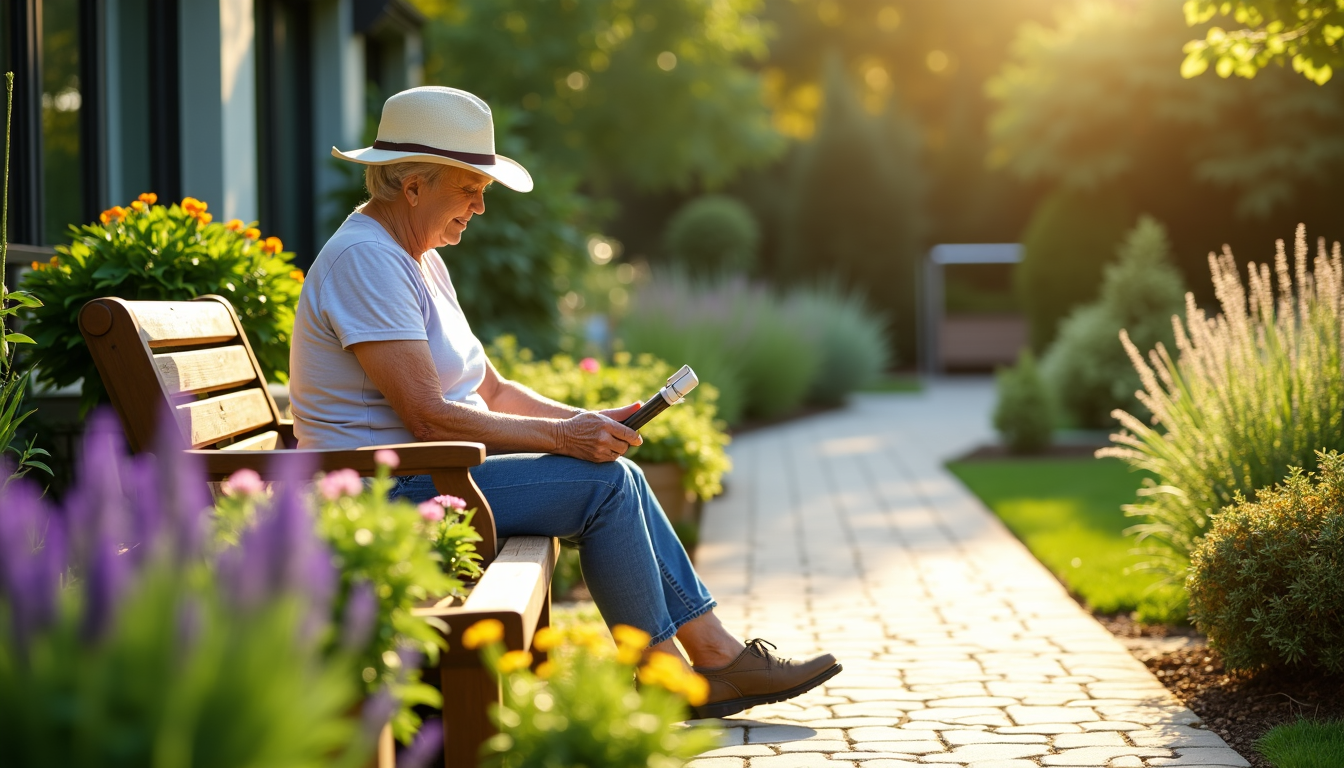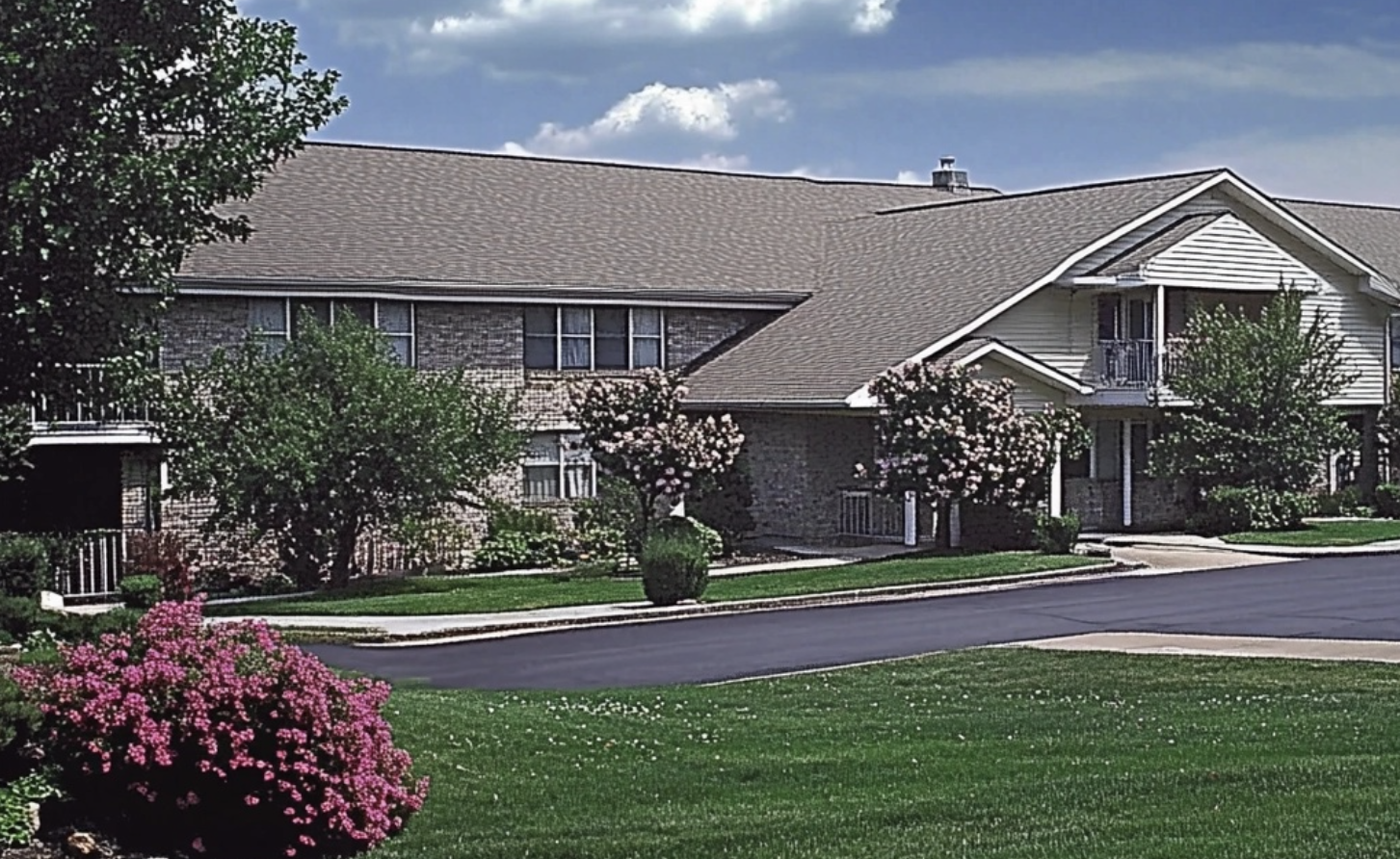Did you know that muscle mass naturally decreases after age 50, making traditional gardening activities increasingly challenging?
While gardening can be physically demanding, we don’t have to give up this rewarding hobby as we age. In fact, raised garden beds can significantly reduce strain on our backs and knees, and ergonomically designed tools make gardening tasks more manageable for older adults.
The good news is that gardening for seniors can be both enjoyable and therapeutic when done right. From automatic watering systems that eliminate heavy lifting to wide, stable pathways that prevent falls, there are countless ways to adapt our gardens to our changing needs.
In this guide, we’ll explore practical solutions to make gardening easier for elderly enthusiasts, from selecting low-maintenance plants to creating accessible garden spaces. Let’s discover how to keep our green thumbs active while protecting our well-being!
Understanding Physical Limitations in the Garden
Gardening brings joy to many older adults, yet physical changes can present unexpected hurdles. As we explore these challenges, we’ll discover how to adapt your garden to suit your evolving needs.
Common challenges for senior gardeners
Knee pain ranks as arguably the most common complaint among elderly gardeners. Additionally, back problems affect gardeners of all ages and can “go out” even in one’s teen years. Arthritis, unfortunately, stands as the most challenging common disease among the elderly according to experts.
These physical limitations typically manifest as:
- Difficulty bending, kneeling, and standing for extended periods
- Reduced grip strength and hand dexterity
- Limited mobility affecting garden accessibility
- Decreased stamina requiring more frequent rest periods
For many older gardeners, the most challenging aspects involve being close to the ground—bending over, kneeling, and working on hands and knees. Furthermore, reduced vision can make identifying plants and spotting potential hazards more difficult.
Assessing your current garden needs
Before making changes, take time to evaluate your current garden space. Consider how gardeners will move to, from, and within the garden. Ask yourself these questions:
Do your pathways accommodate mobility aids if needed? Paths should be at least four feet wide for walker and wheelchair access.
Is there adequate seating positioned strategically throughout your garden? Placing benches under shade gives those who need rest a place to enjoy the landscape.
Does your garden require excessive bending or reaching? The layout should minimize physical stress on your body.
Are your tools still appropriate for your current abilities? The right equipment can significantly reduce strain and fatigue.
Setting realistic gardening goals
Pain is a symptom that should be respected. If certain tasks cause discomfort, it’s essential to modify your approach rather than abandoning gardening altogether.
Start small and gradually expand your project once you understand how much work is involved in garden care. Break gardening tasks into smaller, manageable steps and consider alternating work/rest periods—a technique beneficial for gardeners of all ages.
Remember that gardening shouldn’t end as we age but rather continue differently. Taking regular breaks, completing physically demanding tasks earlier in the day when you have more stamina, and stretching before and after gardening can help prevent injury.
The goal isn’t necessarily maintaining the same garden you’ve always had. Instead, think of it this way: though the amount of gardening may not be what you used to do, in this case, less is more.
Creating Accessible Garden Spaces
The physical layout of a garden directly impacts how accessible it remains as we age. Creating spaces that accommodate our changing mobility needs ensures we can continue enjoying this rewarding hobby for years to come.
Designing wide, stable pathways
The foundation of an accessible garden begins with properly designed pathways. Experts recommend paths should be at least 3 feet wide for single-person access, while primary pathways should measure 4-5 feet wide to accommodate wheelchairs, walkers, and two people walking side-by-side.
For materials, prioritize stability and safety over esthetics:
- Textured, non-slip surfaces prevent falls
- Smooth materials like pavers or poured concrete work best for mobility aids
- Avoid loose materials such as small gravel that can shift underfoot
Consequently, pathway design should consider how people move through the space. Connect paths logically, avoid placing obstacles in walkways, and incorporate gentle slopes rather than steps whenever possible.
Installing handrails and support structures
Handrails provide critical stability, especially since statistics show one in four Americans aged 65+ falls each year. When installed alongside garden paths, steps, and sloped areas, handrails offer a third point of contact that significantly increases stability.
Moreover, outdoor handrails should be:
- Securely anchored to support full body weight
- Installed at appropriate heights (typically 34-38 inches)
- Continuous along stairs and changes in elevation
- Weather-resistant for year-round support
Particularly important is placing handrails wherever terrain levels change, as even a short flight of steps can present fall hazards.
Choosing the right garden seating
Strategic seating throughout the garden creates essential rest spots. Proper seating height (18-22 inches) makes standing up and sitting down easier as we age.
Furthermore, the most senior-friendly seating options include:
- Chairs with back support and armrests for stability
- Benches positioned under shade trees
- Weather-resistant materials that don’t become slippery when wet
- Cushioning that provides joint relief
Primarily, distribute seating throughout the garden to provide rest opportunities near areas requiring maintenance. This thoughtful placement allows us to enjoy our gardens without overexertion.
Choosing Tools That Make Gardening Easier for Elderly
The proper tools can transform gardening from a painful chore into an enjoyable activity for older adults. Research shows that grip strength can drop by up to 25% when the wrist is bent, highlighting why specialized gardening equipment is essential, not optional.
Ergonomic and lightweight tool options
Traditional garden tools often force our wrists into uncomfortable positions, causing strain and discomfort. Therefore, when selecting tools, look for:
- Vertical or upright handles that maintain a neutral wrist position
- Tools weighing approximately 8 oz to minimize fatigue
- Materials like aluminum, fiberglass, or carbon steel for lightweight durability
- Handle diameter of about 1.3 inches (33mm) for optimal grip strength
Long-handled tools deserve special consideration as they allow gardening while standing or sitting, reducing the need for bending. Likewise, hose options have evolved—lightweight coiled versions that stretch to 50 feet yet rebound to just 3 feet offer tremendous benefits for seniors.
Tool adaptations for arthritis and limited grip strength
Despite arthritis challenges, physical therapists confirm that passionate gardeners can still pursue their favorite hobby. Adaptations include:
Specially designed ergonomic garden tools that keep hands in natural positions decrease joint strain. Ratcheting pruners amplify hand strength, enabling users to cut branches up to 1 inch thick with minimal effort.
Tools with arm support cuffs provide additional stability by transferring work from the hand to the forearm. These supports also prevent tools from falling if grip is momentarily lost.
Storage solutions to keep tools accessible
Proper tool organization prevents fatigue from searching for equipment while making gardening more efficient. A well-planned storage system should:
Position frequently used tools at eye level (4-5 feet from the ground) for quick access. For those with limited mobility, tool cabinets or chests can serve double duty for storing garden tools alongside other supplies.
Wall-mounted options like pegboards with hooks utilize vertical space effectively, while garden benches with built-in storage compartments provide both seating and organization.
Pegboard systems can store up to 30 different hand tools while maintaining flexibility to adjust layouts as needs change.
Smart Plant Selection for Low-Maintenance Gardens
Selecting the right plants forms the backbone of a truly senior-friendly garden. Strategic plant choices can significantly reduce maintenance needs while still creating a vibrant outdoor space.
Perennials that require minimal care
Perennial plants offer exceptional value for elderly gardeners since they return year after year without replanting. Native perennials prove particularly valuable as they’ve adapted to local growing conditions and generally resist pests and diseases better than non-natives.
Some standout perennials include:
- Hostas – These shade-loving plants emerge from bare ground in spring and grow quickly to fill large spaces with elegant foliage
- Lavender – Grows best in well-drained soil in a sheltered, sunny spot while providing aromatic benefits
- Daylilies – Require almost no maintenance beyond watering and multiply reliably each year
- Oakleaf hydrangeas – Offer a triple benefit with low maintenance needs, winter interest, and spectacular fall color
Drought-resistant plants that need less watering
Many drought-tolerant plants can be identified by their physical characteristics. Plants with small, needlelike leaves (like lavender) or those with moisture-conserving adaptations such as leaf hairs or waxy coatings generally require less watering.
Mediterranean herbs naturally excel in dry conditions. Rosemary, thyme, and sage thrive in well-drained soil and full sun while simultaneously providing culinary benefits. Simultaneously, fragrant herbs often indicate drought tolerance.
For flower lovers, coneflowers stand up remarkably well to high heat and dry conditions while attracting butterflies to your garden. Likewise, Black-eyed Susans thrive even in tough environments with minimal water needs.
Container-friendly vegetables and herbs
Container gardening offers particular advantages for seniors with limited mobility or space. Almost any container will work, provided it has drainage holes and is the right size for the plant.
Herbs rank among the easiest edibles for container growing. Basil, an easy-to-grow aromatic, adds lovely flavor to dishes. Mint grows vigorously (best in its own pot to prevent spreading) while parsley takes slightly longer but rewards patience.
For vegetables, bush beans perform well in containers as small as 8″ deep, whereas tomatoes (especially “determinate” varieties) and peppers thrive in pots and require less frequent watering than other plants.
Conclusion
Gardening brings countless joys and benefits as we age, though adapting our approach becomes essential for continued enjoyment. Smart garden design choices, from wide pathways to strategically placed seating areas, allow us to maintain our beloved hobby while protecting our well-being.
Selecting the right tools and making thoughtful plant choices significantly reduces physical strain. Rather than viewing these adaptations as limitations, we can embrace them as opportunities to create beautiful, low-maintenance gardens that match our current abilities and energy levels.
Remember that gardening should remain a source of joy, not frustration. Breaking tasks into smaller segments, using ergonomic tools, and choosing easy-care plants helps us continue nurturing our green spaces. Most importantly, these adjustments allow us to keep our connection with nature while ensuring our safety and comfort in the garden we love.
FAQs
Q1. What are some key features of a senior-friendly garden? A senior-friendly garden typically includes wide, stable pathways, strategically placed seating areas, raised beds to reduce bending, and ergonomic tools. These features make gardening more accessible and enjoyable for older adults with limited mobility or strength.
Q2. How can I make gardening easier on my joints? To reduce strain on your joints, use long-handled tools to avoid excessive bending, opt for lightweight equipment, and consider raised garden beds. Take frequent breaks, stretch before and after gardening, and use cushioned kneelers or garden seats for comfort.
Q3. What are some low-maintenance plants suitable for senior gardeners? Perennials like hostas, lavender, and daylilies are excellent low-maintenance options. Drought-resistant plants such as rosemary and coneflowers require less watering. For vegetables, consider container-friendly options like bush beans and determinate tomato varieties.
Q4. How wide should garden paths be for accessibility? Garden paths should be at least 3 feet wide for single-person access, while primary pathways should measure 4-5 feet wide to accommodate mobility aids like wheelchairs and walkers. This width also allows for two people to walk side-by-side comfortably.
Q5. What types of tools are best for elderly gardeners? The best tools for elderly gardeners are lightweight, ergonomic, and designed to reduce strain. Look for tools with vertical or upright handles, weighing around 8 ounces, and made from materials like aluminum or fiberglass. Ratcheting pruners and tools with arm support cuffs can be particularly helpful for those with limited grip strength.




